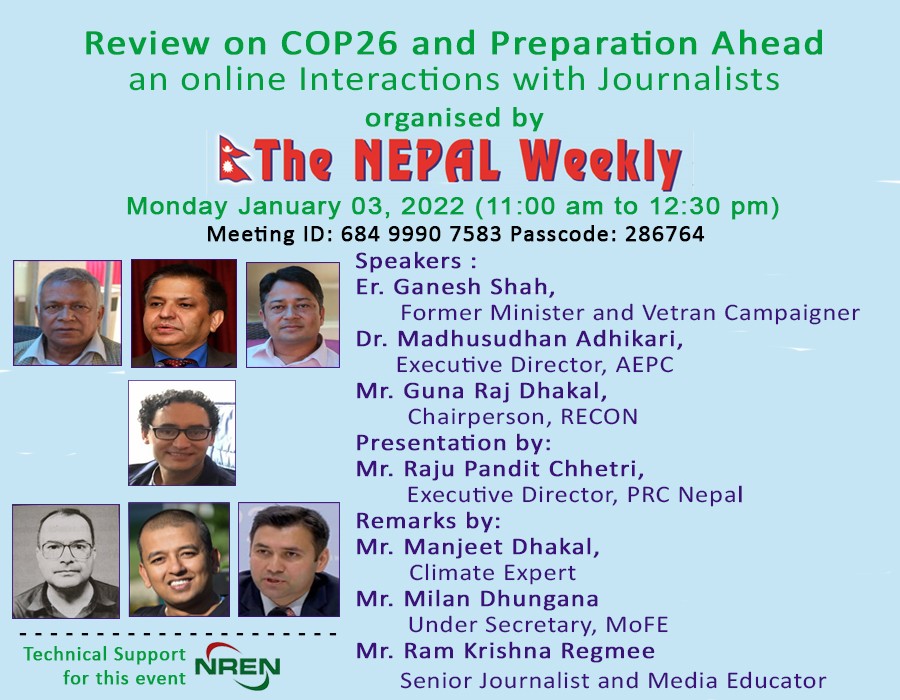- Char Mahabakyas -
 The Nepal Weekly
The Nepal Weekly  April 19, 2022
April 19, 2022Vedic scholars often refer to four great statements – Char Mahabakyas – based on the Vedas and the Upanishads. Each of the sentences represents the essence of the Vedic era thinking – oriental philosophy – through different words. While all sentences of the Vedas and the Upanishads are equally important, the four facilitate people to be acquainted with their focal point.
The four Upanishadic expressions, which could also be described as the synthesized conclusion or capsulized gist or digest-brief of the Upanishads, are: Prajnanam Brahma (Rigveda, Aitariyopanishad), Aham Brahmasmi (Rigveda, Brihadaranyaopanishad), Tatwamasi (Samaveda, Chhandogya Upanishad) , and Ayamatma Brahma (Atharva Veda and Mandyoukka Upanishad). Each serves to elucidate the message the great thought of Advaita Vedanta – presence of one cosmic consciousness. Each indicates the reality of the highest of states in which individual self dissolves inseparably into Brahma.
The great statements refer to the existence of the Paramatma in varying ways but meaning the same: The Brahma or the Paramatma or the divine consciousness is true, conscious, bliss and origin and also anadi –nothing beyond it. It is independent, all pervading, nirguna which means it is devoid of satwa, raja and tama.
The statements are also interpreted as mentioning that the Paramatma cannot be within the access of the sense organs. The divine consciousness cannot also be understood through textbooks or knowledge-stream. The Atma is something which could be realized only after following intense practice of meditation, disciplining of intelligence and mind.
One statement stresses realization of shape – Swarup Bakya -of the divine consciousness while the other emphasizes research in realization of the Atma. The third has been described as messaging of the lesson on the Atma. The fourth talks of experience as the most determining in realization of the presence of the Atma.
All 4 Mahabakyas explain the inability of sense organs to feel the presence of the Atma; all consider the practice of emphasizing sense organs, taking bodily pleasure as supreme and explaining materialism as the end goal ignorance and until the ignorance is erased Atma’s presence cannot be perceived or realized or experienced; all talk of ignorance as dark and consciousness of the Atma as light; all suggest realization of Atma as Divine Consciousness and driving force behind the whole universe and its being and their activities is important but difficult to accomplish.
Efforts should be made to realize how Divine Consciousness is in everything, being and each individually could dissolve into the same or spread as into many without losing linkage with it.
By Shirish B. Pradhan
(See corporatenepal.com for Nepali version)

